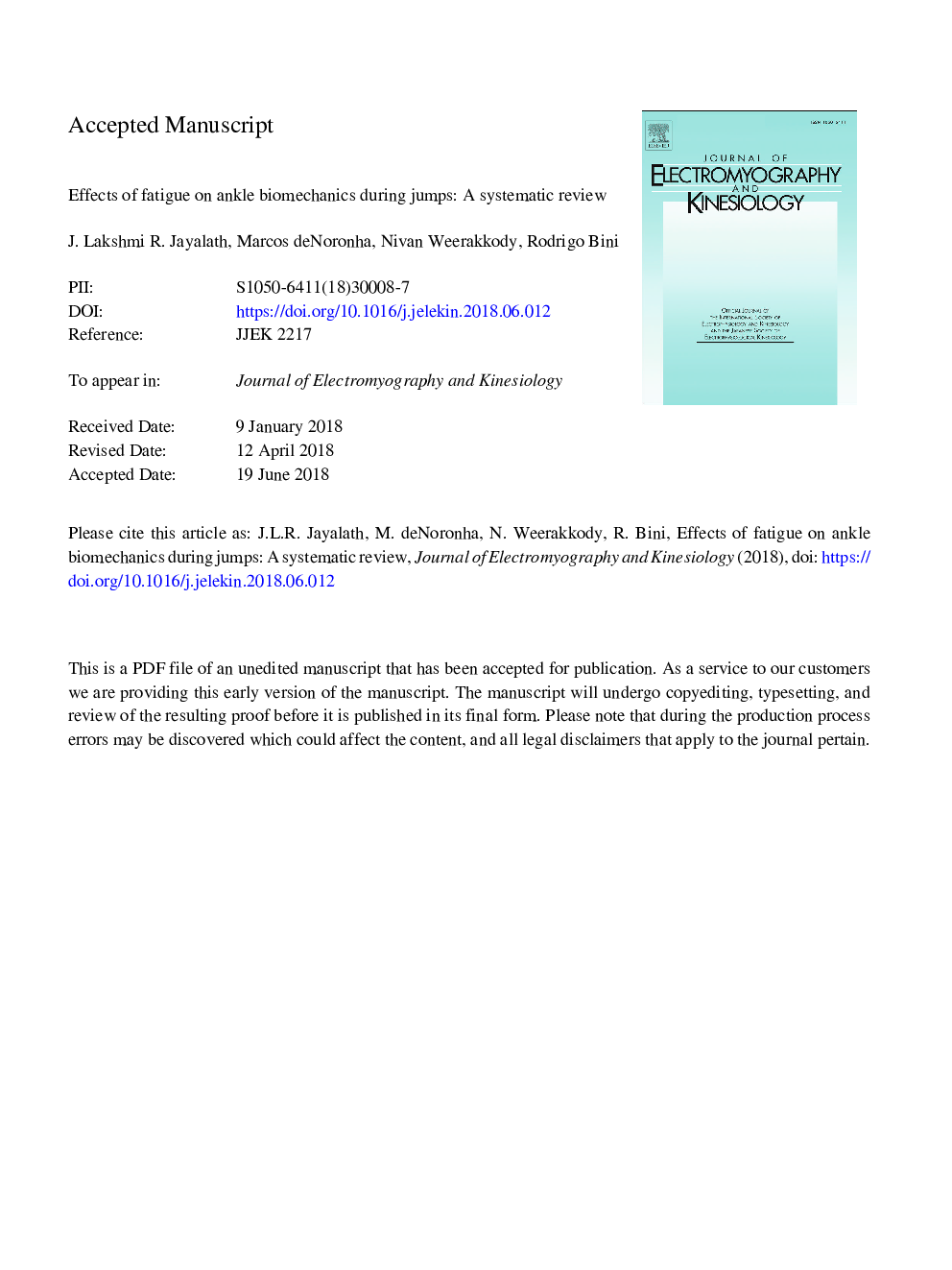| Article ID | Journal | Published Year | Pages | File Type |
|---|---|---|---|---|
| 8799740 | Journal of Electromyography and Kinesiology | 2018 | 36 Pages |
Abstract
Fatigue is common during physical activity and can have an effect on ankle biomechanics during different actions, such as a jump. Yet current research on the topic is very heterogeneous and hinders clarity on what changes are actually due to fatigue. Therefore, the aim of this review was to summarise and analyse the current literature that investigates the effects of fatigue on ankle biomechanics during a jump. Searches were conducted in five databases and studies with activities eliciting fatigue and comparing outcomes under a fatigue and non-fatigue conditions were selected. Twelve studies were included, six analysed double legged jumps and six single legged jump. When comparing ankle biomechanics between a fatigued condition and a non-fatigued condition, findings suggested that at initial contact at landing, dorsiflexion increased in single legged jump and plantarflexion increased in double legged jump; at maximum knee flexion after landing, dorsiflexion decreased in double legged jumps and plantarflexion increased at full foot contact in single legged jumps. Also, ankle power (for double legged jump) and ground reaction force (for double and single legged jump) reduced at initial contact to maximum knee flexion at landing after fatigue and ankle power also reduced at takeoff in single legged jumps. The current review shows that fatigue affect ankle biomechanics by reducing dorsiflexion, from initial contact to maximum knee flexion at landing, and power during the jump takeoff. Such information could have implications for injury prevention.
Related Topics
Health Sciences
Medicine and Dentistry
Orthopedics, Sports Medicine and Rehabilitation
Authors
J. Lakshmi R. Jayalath, Marcos de Noronha, Nivan Weerakkody, Rodrigo Bini,
